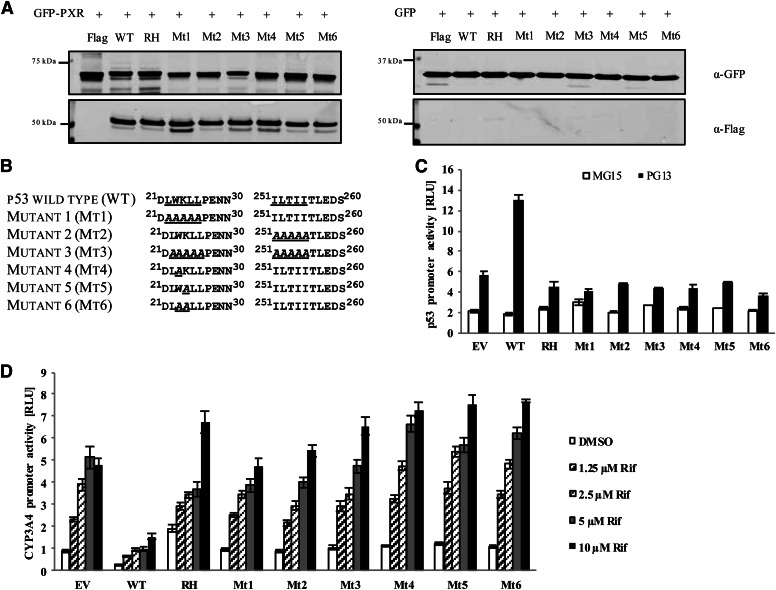Fig. 3.
Neither LXXLL nor IXXII NR-interacting motif on p53 is required for p53-PXR interaction. (A) U2OS cells stably expressing GFP-PXR or GFP were transiently transfected with FLAG-tagged wild-type p53 (WT) or one of the FLAG-tagged p53 mutants (RH, Mt1, Mt2, Mt3, Mt4, Mt5, and Mt6) for 48 hours. Cell lysates were immunoprecipitated using GFP-specific beads and resolved using SDS-PAGE and then immunoprobed using anti-GFP (for GFP-PXR) and anti-FLAG (for FLAG-p53) antibodies. (B) FLAG-tagged p53 mutants were generated at the LWKLL and ILTII sequences by replacing one or multiple amino acids with alanine. (C) Wild-type p53 and the indicated p53 mutants were transiently transfected in HCT116 p53−/− cells along with p53 responsive luciferase reporter (PG13) and TK-Renilla luciferase as a control for 48 hours. Luciferase reporter plasmid that does not respond to p53 (MG15) was used as a control to show the specificity of the p53 promoter activity. (D) HCT116 p53−/− cells were transfected using FLAG-PXR, CYP3A4-luc, TK-Renilla luciferase plasmid, and either empty vector control (EV), wild-type p53 (WT), or mutant p53 (RH, Mt1, Mt2, Mt3, Mt4, Mt5, and Mt6) for 48 hours. Cells were treated with dimethylsulfoxide (DMSO) or with 1.25, 2.5, 5, or 10 µM rifampicin (Rif) for 24 hours before analysis using the Dual-Glo luciferase assay system. The firefly luciferase signal was normalized to the corresponding Renilla luciferase signal and reported as relative luciferase units (RLUs).

